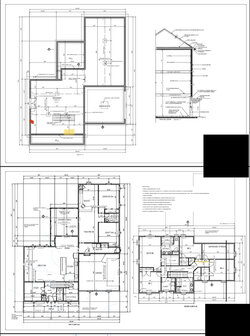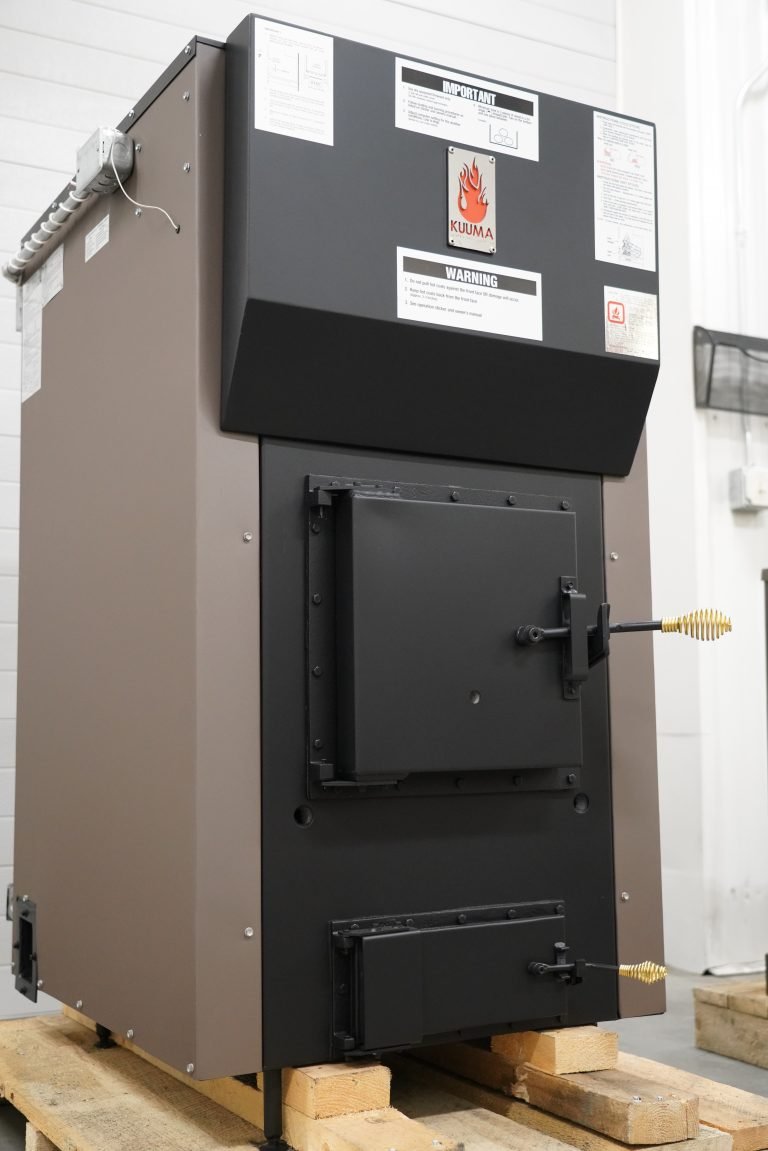I would not let a rebate push me too fast into an installation that could be the wrong one.
I think more stove research is called for. I would also suggest that a stove/wood furnace with a thermostat is going to be an advantage for you because of more constant and even heat output, which helps negate the need for those super high burns for extended lengths of time try to play “catch-up” with the home’s temperature.
Personally, my feeling is I don’t care if you choose the largest Osburn, Blaze King, Lopi, Regency, etc., they’re all going to be borderline too small and if not they’ll most certainly be running near full tilt, if not full tilt, the majority of the time…regardless of insulation up and down and in the basement. Any way you slice it that is a lot of home and I’m pretty familiar with that much cubic feet and even more square feet of home. My aunt and uncle tried to heat 6000 with 8’ ceilings and now they just use the gas furnace. They couldn’t keep up with the wood demand even when using the wood burning add-on and a stove. So they stick with gas now.
The Regency Pro F5200 is only advertised at 80,000btu’s.
https://www.regency-fire.com/en/Products/Wood/Wood-Stoves/F5200#divFullSpecs It has the secondary air tubes and the catalyst, but not the btu’s you need. Not even close. So, the 30 hour burn time will be nothing near that, not even close, since it’ll be running near or at maximum capacity the majority of the time during the coldest months. It’s a well built stove, but unfortunately most stoves manufactured today aren’t designed to last more than ten years running that hard. Call them (any company) and ask the what the life of the stove is running full tilt most of the time.
The Blaze King 40 has the thermostat, but not enough btu’s, in my opinion, at only 57,000btu’s.
https://www.blazeking.com/products/wood-stoves/king-classic/ The btu rating is actually lower than that when allowing for a higher constant burn for 12 hours.
Again, you’re going to be running these stoves full tilt near all the time Dec/Jan/Feb with some fluctuation, but potential for super cold depending on the weather pattern for those three months. The square feet is one thing, and these stoves can handle that, but you add in ten foot ceilings and I think all bets are off.
Lopi Liberty
https://www.travisindustries.com/Docs/100-01511.pdf only 63,000+ btu’s and NO thermostat. So forget about it. You’ll be feeding it every 6-8 hours.
Drolet HT3000
Much higher btu rating than the Lopi, but not recommend for the space according to Drolet.
https://www.google.com/search?q=Drolet+HT+3000&ie=UTF-8&oe=UTF-8&hl=en-us&client=safari
Since it’s an SBI stove them all of their brands including Drolet, Osburn, etc., are capable of higher heat output but not recommended for the space and you would be feeding them every 6-10 hours. That’s a lot of variability with tending times.
Woodstock
If you study these stoves and compare them with each other, paying attention to the following…then use the same perimeters to look at other brand stoves, you’ll realize you can’t just look at one of these places o compare stoves. You need to compare all stove by the following:
-btu or heat range output
-area recommended to heat
-physical size and weight of stoves compared
-Firebox size
-Burn time
Mass matters!
1. Some will argue that that a stove with h lots of mass takes more time heat up and more time to lose its heat. Both of these are correct.
2. Some will argue that thinner heats up faster but also cools faster. Again, both are correct.
The important thing is that once heavy mass is heated up it’s the tending times where it benefits you most because the stove remains hotter during those times.
Physical size matters as well. A person only needs to compare the three stoves I linked to from Woodstock to see that if you only compare the btu ratings that can be misleading without looking at the recommendations for the amount of space to be heated and then look at the physical size of the stove themselves as o see btu’s only doesn’t tell the full story.
DS Energymax 160
https://dsofpa.com/wp-content/uploads/DS_Brochures_EnergyMax_2021_ToPub_HighWeb.pdf.
-Thermostat for constant and even heat output
-large heating area recommended
-High btu output rating 160,000 btu’s
-Firebox size very large
-Ability to burn both wood and coal and with the thermostat extends burn times of both fuels. Will still eat a lot of wood though.
-Needs zero electricity from o help move convection air through the home.
-Very large physical sized stove which won’t have to be run as hard for as long, plus thermostat helps with this too.
-Heavy mass over 1000lbs
-Shaker grates means no shoveling of ash.
-Ash pan means easier disposal.
You are going to need something bigger than an ordinary average stove. The F5200 is bigger than average. I happen to think it will be far from enough.
I’m not going to recommend any stove. I’m just pointing you to links to explain what I’m talking about and for you to make a decision on yourself. There are pro’s and con’s to every choice depending on your wants and needs. Your needs will remain unknown until you make a decision and gain experience with that particular stove. You will then decide if your needs were met or not, at which point it may be too late as money will be spent and/or wasted and more money may need to be spent. Consider all your options.
Remember, only linked to a few stoves. There are more stoves out there. Whether they fit your needs or not will be up to you and your research.
EDIT:
By the way, be prepared to cut, split, stack, or buy 15-20 cords of wood to get ready for your first burning season and to get ahead on the 2-3 year seasoned wood plan, preferably the 3 year plan. You’re going to need it…a lot of it on hand and seasoning. Each year you replace what you used and repeat. The dryer the wood is the better off you will be. Don’t forget to top cover it all.
I wish you luck. To heat soley with wood will likely be a daunting task, imo. Coal would be better as it burns hotter, but even with that I don’t envy you as you will remove lots of ash twice a day. So coal would be out as well if it were me. A coal stoker boiler might be a good option, something like an Axeman Anderson unit, but it would never be placed inside the home or basement.






